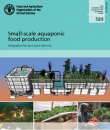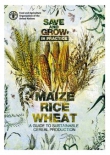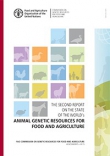Publications

L’agriculture mondiale doit faire face à des défis sans précédent. De profonds changements dans nos systèmes alimentaires et agricoles (productions végétales et animales, foresterie, pêches et aquaculture) sont indispensables.

This technical paper begins by introducing the concept of aquaponics, including a brief history of its development and its place within the larger category of soil-less culture and modern agriculture. It discusses the main theoretical concepts of aquaponics, including the nitrogen cycle and the nitrification process, the role of bacteria, and the concept of balancing an aquaponic unit. It then moves on to cover important considerations of water quality parameters, water testing, and water sourcing for aquaponics, as well as methods and theories of unit design, including the three main methods of aquaponic systems: media beds, nutrient film technique, and deep water culture.

FAO’s best-selling 2011 publication, Save and Grow, proposed a new paradigm of agriculture, one that is both highly productive and environmentally sustainable. This new book looks at the application of “Save and Grow” practices and technologies to production of the world’s key food security crops – maize, rice and wheat. With examples drawn from developing countries worldwide, it shows how eco-friendly farming systems are helping smallholder producers to boost cereal yields, improve their incomes and livelihoods, conserve natural resources, reduce negative impacts on the environment, and build resilience to climate change. The book will be a valuable reference for policymakers and development practitioners guiding the transition to sustainable food and agriculture.

Animal genetic resource diversity underpins the supply livestock products and services across a wide range of production environments. It promotes resilience and serves as a basis for adapting livestock management to changing conditions. It is vital to the livelihoods of many of the world’s poor people. It can contribute to the delivery of ecosystem services such as landscape management and the maintenance of wildlife habitats. However, it is often undervalued, underused and under threat.

Conserver les ressources génétiques pour l’alimentation et l’agriculture et promouvoir leur utilisation au service de la sécurité alimentaire et du développement durable dans le monde, pour les générations présentes et futures. Les ressources génétiques pour l’alimentation et l’agriculture (RGAA) – végétaux, animaux, ressources aquatiques, forêts, microorganismes et invertébrés, dans toute leur diversité – constituent un vivier stratégique dont tous les systèmes de production alimentaire sont tributaires.

